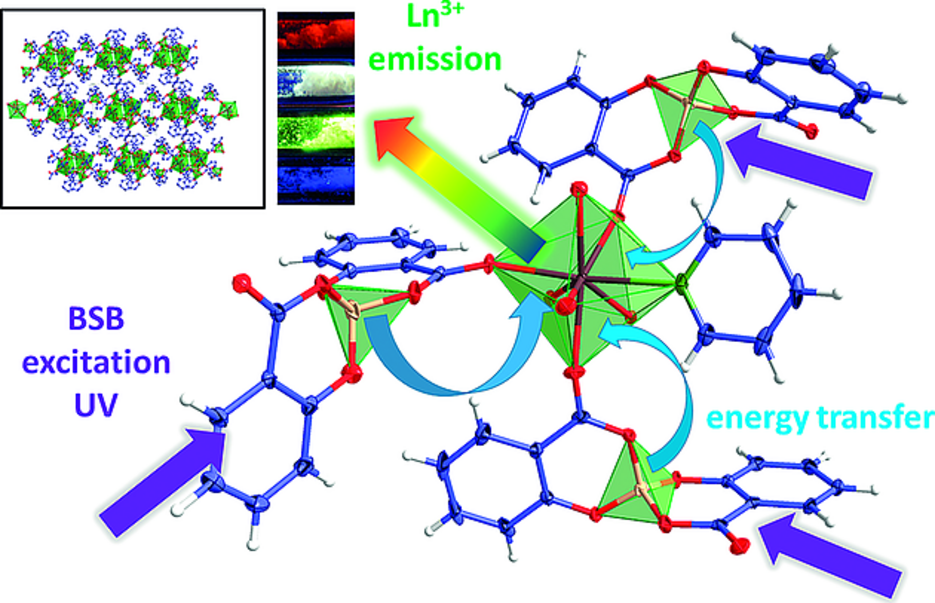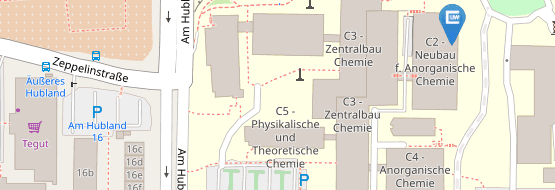Just Published in European Journal of Inorganic Chemistry
28.03.2017Bis(salicylato)borate as Versatile Sensitizer for Highly Luminescent Lanthanide Oxoborates from the Ultraviolet to Near Infrared with 4f and 5d Participation of the Lanthanides
Authors: Sven H. Zottnick,Jan A. P. Sprenger,Maik Finze,Klaus Müller-Buschbaum*
Abstract: Several lanthanide bis(salicylato)borate (BSBs) compounds were synthesized from anhydrous lanthanide chlorides and pyridine (py). The reactions start with the formation of small complexes, as indicated by [ErCl2(py)4(BSB)], on to 1D polymers 1∞[Ln(BSB)3(py)2] (Ln = Y, La–Nd, Sm) with a reduced py content. As the lanthanide radii contract along the lanthanide (Ln) series, the formation of 2D networks of the constitution 2∞[Ln(BSB)3(py)] (Ln = Sm, Eu, Tb, Dy, Er) is observed with the further release of py. The coordination polymers exhibit intense photoluminescence from the UV to the near-infrared (NIR) region through lanthanide-specific 4f–4f emission for the Nd3+, Sm3+, Eu3+, Tb3+, and Dy3+ species. The emission is remarkable for the Dy3+ (yellow-white) and Nd3+ (NIR) species owing to the sensitizer effects of the [BSB]– anion, which shows energy transfer to most Ln ions. For the Ce3+species, the participation of 5d states is observed and produces parity-allowed broadband 5d–4f emission. The bis(salicylato)borate ligand shows fluorescence in the UV with a short lifetime of only 2 ns, which makes the energy transfer in the other Ln compounds remarkable and marks it as versatile sensitizer for these metal ions.
Link: http://onlinelibrary.wiley.com/doi/10.1002/ejic.201601512/abstract





